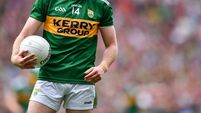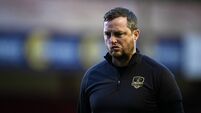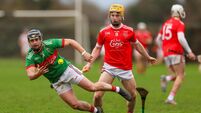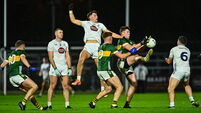Phil Healy: ‘I take the whole thing, put it back into my sessions and go out there and not give up until the very end’
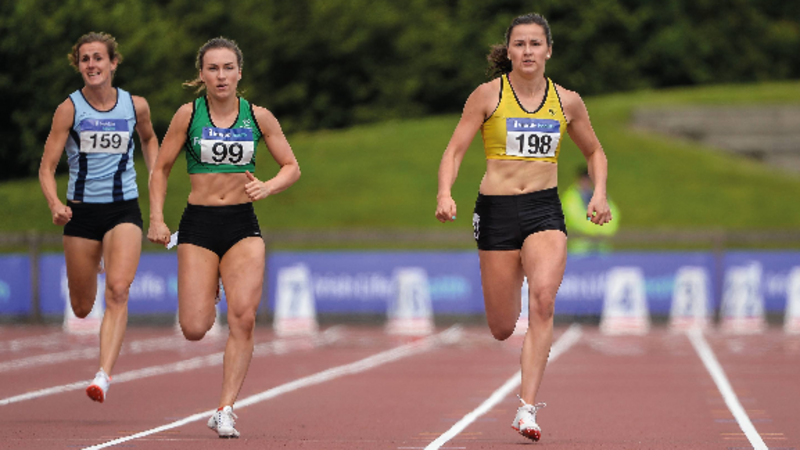
Since then the Bandon sprinter has made giant strides, clocking a world-leading 52.08 for 400m in Vienna last month, which saw her named European Athlete of the Month for January.
The 23-year-old will be a star attraction at this weekend’s National Indoor Championships in Abbotstown, her final race before next month’s World Indoors in Birmingham.
Sport
Last year I was training in Cork on my own, and I’d only see my coach [Shane McCormack] once every two or three weeks. It was just me and my watch at the Mardyke, but this year I moved to Waterford and started a part-time masters at WIT. It’s two days a week, so I live the life. Shane sees absolutely everything I do, and I have training partners now that I didn’t have in Cork. They’re all lads, which helps push you along. Last year I was doing a H-Dip in computer software and it was 9-6 every day, then training, then back to college until 9.30 to finish your work. It was jam-packed, but now I can recover between sessions.
It definitely requires a big step up. Early on the sessions were like 500m, 300m, 500m, 300m, and I was like, ‘feck that, nah.’ But it shows what I needed to do, and the long sessions are actually my favourite now. I like the challenge of meeting the targets.
Yeah, it popped up the other day in a story about the best finishes of all time, but you can get carried away with all of that. Just like winning the European Athlete of the Month, it was a great boost but at the end of the day, what does it mean?
You’re not going to line up and be quicker than anyone else just because you have that title. You take the confidence from it and drive on.
It was constant. Months later when I looked at my filtered messages on Facebook, there were hundreds, from television crews and stuff like that, and in a way I’m glad I missed them at the time because I could have ruined my whole summer [Healy competed at the European Championships in Amsterdam in July 2016].
It was great, it put athletics out there in a positive light, but I take the whole thing, put it back into my sessions and go out there and not give up until the very end. Every session, every race, I walk off the track and know that I’ve given it my all. That’s the message I took from it.
I think the support services and facilities have made a difference, but it’s also people’s drive. It all comes down to coach education and sharing the knowledge, stopping the attitude of people who refuse to learn.
There are 13 coaches in the Club TLG network [a collaboration among Irish sprints coaches], and there are different groups working together. We’re driving each other on. You see it on the international circuit: the top coaches are networking and learning from each other.
This is my fifth year with him, and he’s super. I get on so well with him and he has a great vibe. It just works. I also have great support in Waterford IT. I get financial support to cover my fees, have unlimited physio and a nutritionist and physiologist in Stephen Barrett who’s always finding missing hundredths [of a second].
They all add up.
Absolutely, in [the recent world indoor tour meeting in Karlsruhe, I was the only unsponsored athlete and you can still be up there with the best. It shows what you can do once you set your mind to it. People often think America is the best option for great scholarships but they often don’t think of the coach, and that’s what matters.
I knew the signs were there all winter. It was a quick time – 52.08 is world class and it’s still top 10 in the world – but rankings mean absolutely nothing when you go to championships. It’s about executing your race, who turns up in their best shape on the day.
Monday is a recovery session and Pilates; Tuesday is track and gym; Wednesday is a recovery session and a gym session; Thursday is the track – a long nasty session; Friday is off; Saturday is a weights session, and Sunday is another long nasty one – could be 400s, 500s, 600s.
Absolutely, but at the end of the day, [competing on the world indoor tour in] Germany was great practice — a sold-out arena, great atmosphere, the call-room situation. Yes, it’s the biggest championship of the year but for me it’s like nationals: just another race, execute your plan, get to the bell and take it home. If you let it get to you it’s nervous energy you’re wasting.
Absolutely, once Rio was done it’s a four-year cycle to the next Olympics, and in Vienna I was 0.4 inside the standard, which gives you the confidence you can be there. But there’s a lot of championships along the way. It’s about getting the weeks of training back to back. If you get the consistency, the times are going to come.



